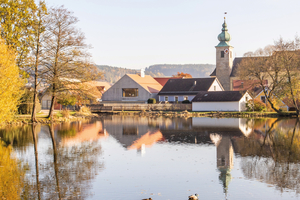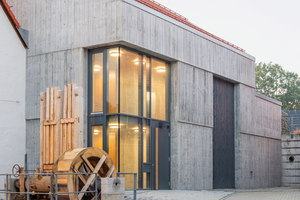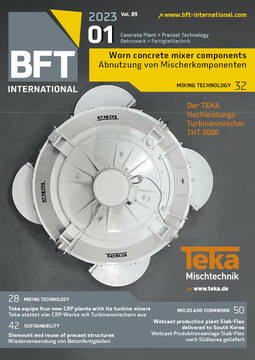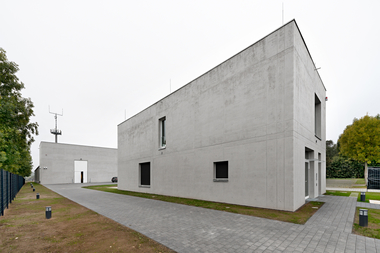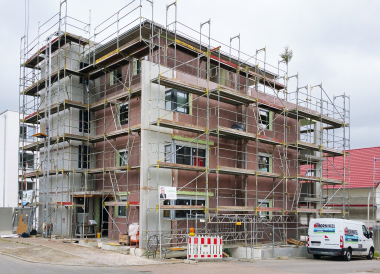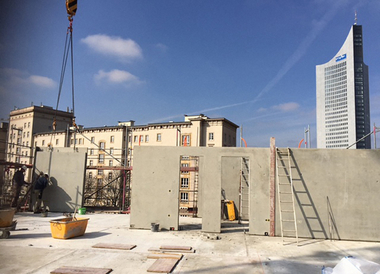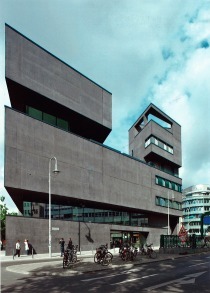Lightweight concrete sculpture as memory of the town
An open house that preserves the past but also invites people to meet - this was the basic idea for the new town archive in Oberviechtach. It was implemented as a monolithic sculpture cast from Liapor lightweight concrete. It offers ideal conservation conditions for archiving, deliberately picks up on the local architectural language and is a living part of the town.
City archives often play only a subordinate role in the life of the city and its inhabitants. The new town archive in Oberviechtach in the Upper Palatinate shows that this can be done quite differently: it is designed as an interactive and dynamic house that stores people‘s history and memories on the one hand, and on the other hand contributes specifically to the transfer of knowledge. „The new archive should be a protective and open house at the same time, preserving the past, but at the same time inviting citizens and visitors,“ explains Peter Brückner of Brückner & Brückner architects, who were commissioned with the new town archive at the beginning of 2018. „It thus not only stores the knowledge and memories of the city, but itself becomes a living part of the city and its history.“
Expanded clay insulates, stores, and regulates
The building‘s structural-material design is as groundbreaking as the concept of the city archive - with 50-cm-thick exterior walls made of Liapor lightweight concrete: „It is a monolithic sculpture cast from Liapor lightweight concrete,“ Peter Brückner makes clear. The special building material takes on several tasks at once. For example, the large mass of the outer shell protects the interior and provides the necessary thermal insulation for the building. Responsible for this are the Liapor expanded clay spheres contained in the lightweight concrete and, in particular, their air-entrained interior.
As a result, Liapor has both a highly insulating and heat-storing effect. At the same time, the outer shell also ensures a particularly stable, homogeneous temperature and humidity balance, thus providing the best conditions for future-proof storage of archival materials. This advantage also goes back to the Liapor expanded clay balls: They can absorb and release water vapor, thus regulating the humidity and always ensuring a balanced room climate.
Satisfied with the building material
In the interior, the lightweight concrete surfaces were also provided with an average 20 cm thick standard concrete layer with concrete formwork in order to optimize the statics.
A total of around 250 m³ of LC12/13 was used for the Oberviechtach municipal archive. The building material manufacturer and supplier was Michael Baumer Hoch- und Tiefbau GmbH & Co. KG in Oberviechtach, which also carried out the construction work. The recipe for the Liapor lightweight concrete was developed by Brückner & Brückner architects in close cooperation with the local building materials manufacturer in Oberviechtach. A sample wall was also cast there in advance to ensure the desired materiality and surface appearance. „The implementation of the lightweight concrete shell required a lot of planning discipline. The concreting with the vertically and horizontally staggered formwork boards was also challenging, but went off without a hitch thanks to the great skills of everyone involved. We are very satisfied with the building material,“ concludes the architect. Thus, after almost three years of construction, the city archive could be ceremoniously opened and since then forms a very special place of history and encounter.
CONTACT
Liapor GmbH & Co. KG
Industriestr. 2
91352 Hallerndorf-Pautzfeld/Germany
+49 9545 448-0

